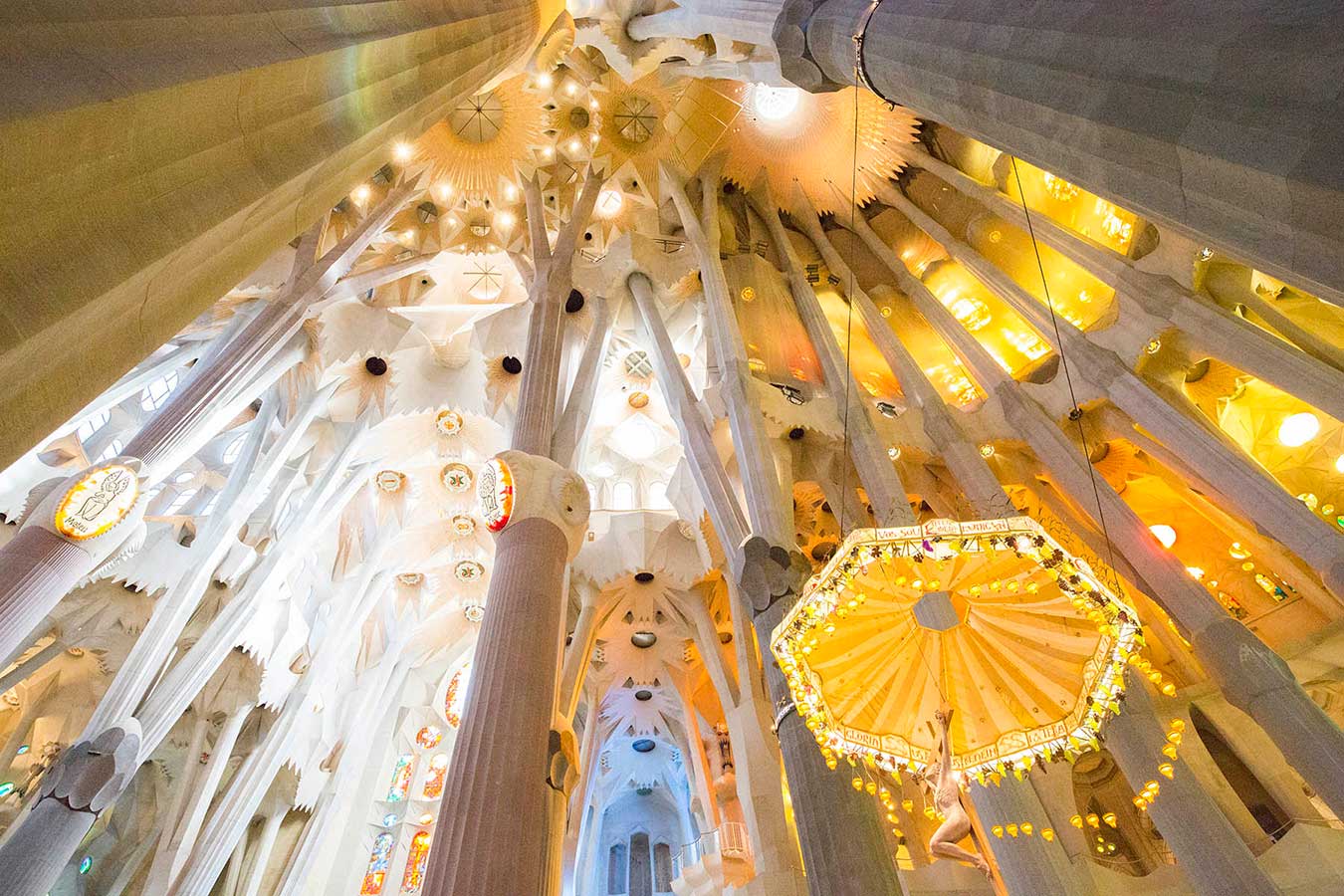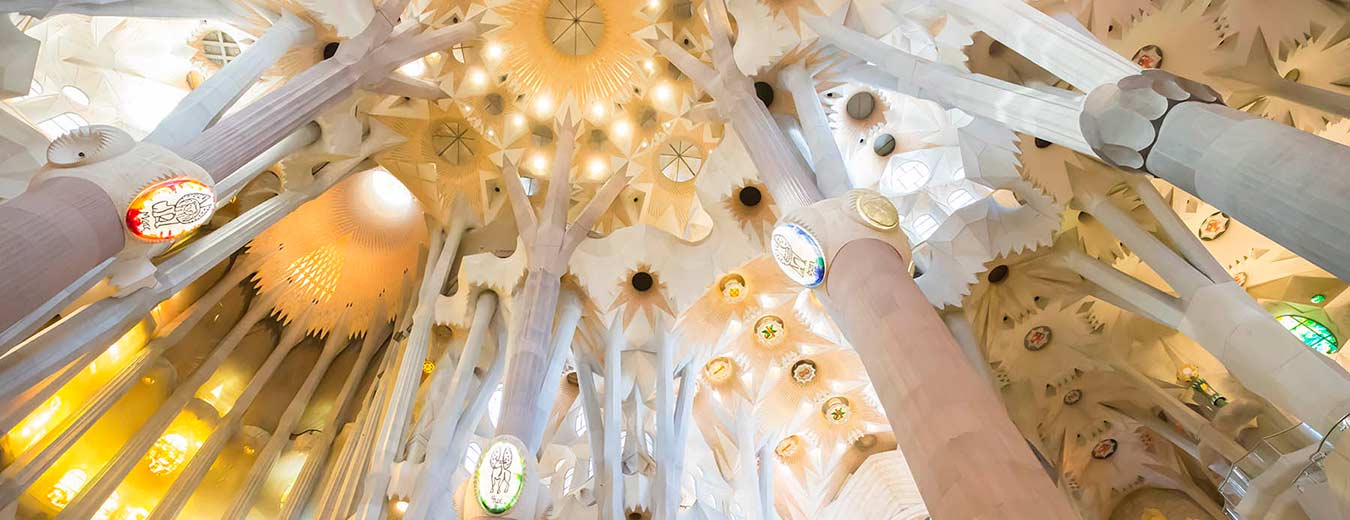

Antoni Gaudí grew up during the socalled Catalan Renaissance (la Renaixença). The use of the word renaissance alludes to the fact that the people of Catalonia wanted to revive the greatness of the Catalan Middle Ages - a period where Catalonia was an independent super power in the Mediterranean area.
In this moment, Catalonia experienced economic prosperity, that primarily was due to the growing industrialization of Catalonia. The economic and cultural climate created perfect conditions for a renewal within the arts and architecture, that goes under the name of modernismo (in catalan: modernisme). The heyday of the middle ages and gothic architecture were the most important sources for the architects and artists at the end of the 19th century.
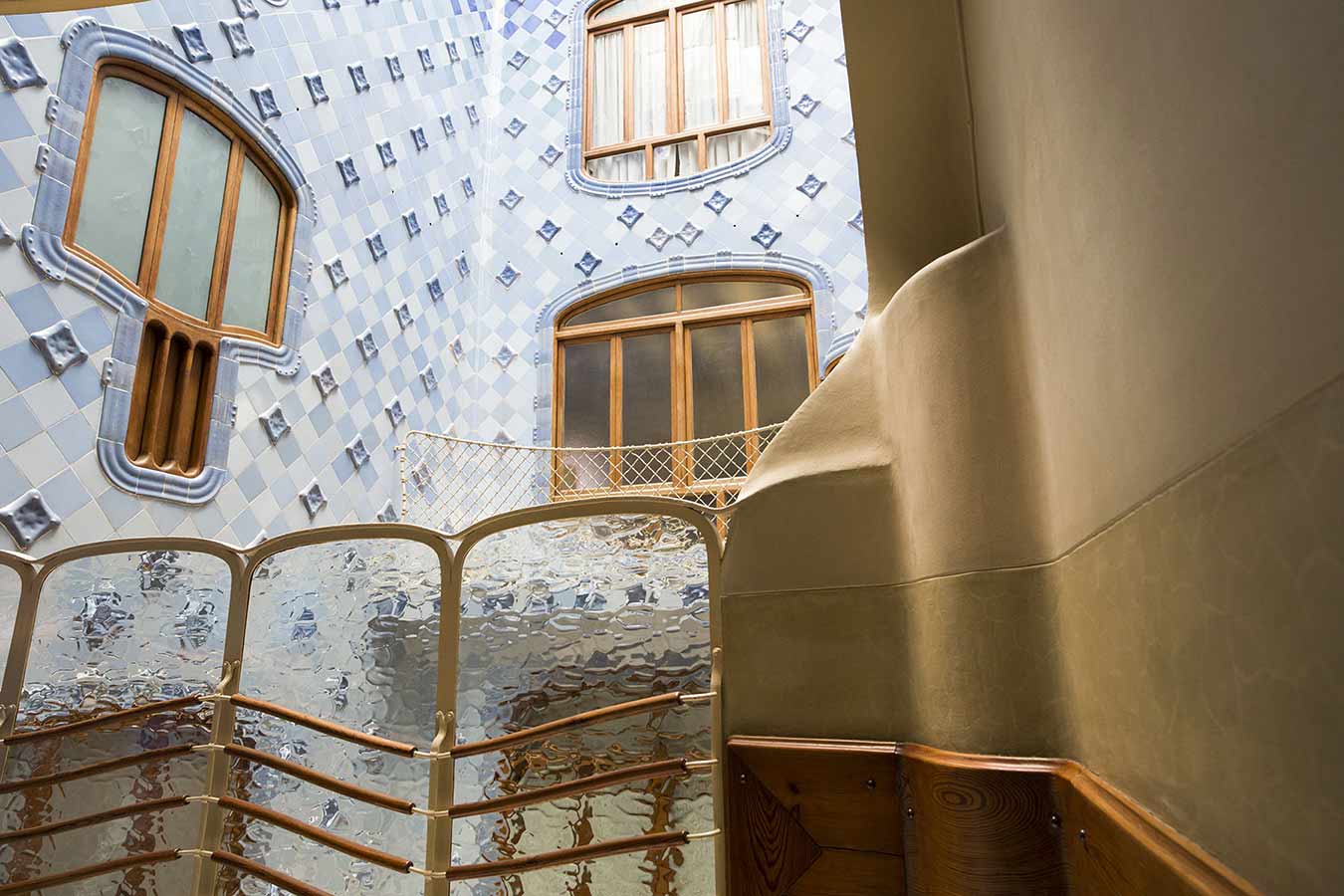
The architecture of the middle ages had a big impact on the young Antoni Gaudí. At an early age, Gaudí regularly visited the monastery Reial Monestir Santa Maria de Poblet. The Catalan kings ruled in a large area in the Mediterranean Area and those kings were buried in the Monastery from the 14th century.
In Gaudi's time, the monastery was in ruins, and the greatness of the buildings had gone into oblivion; but not for Gaudí and his friends Toda and Ribera. Together, they prepared a plan for the restoration of the monastery, and Toda wrote long and sentimental poems about the Santa María de Poblet. Another important source of inspiration during Gaudí's adolescence, was the gothic cathedral of Tarragona, located just 10 km. from Reus.
Gaudí quickly became one of the most important architects of the period - but he was far from the only modernist architect. Catalan modernism was a very wide movement that influenced a large quantity of artists, architects and artisans. Among the most important architects of the period are

In 1868 Antoni Gaudí moved from his natal town Reus to the big city of Barcelona and five years later he began to study at the School of architecture in Barcelona. Here, he had access to books about the architectural heritage of Spain and he found great interest in books about Arab and Mudéjar architecture.
Also, he became interested in the French archtiect Viollet-le-Duc, who had led the restaurantion of the Medieval castle of Carcassonne, as well as the English architect John Ruskin, who had written about historicism in architecture - a modern architecture that was deeply rooted in styles of the past.
During the summer of 1878 Gaudí met the rich industrialist Eusebi Güell i Bacigalupi. The two men had in common that they were Catalan nationalists and interested in art. Eusebi Güell had created his fortune thanks to the growth within the textile industry, and during his journeys to England he had leant about the newest trends of art and had enlarged his knowledge about socialism and social residence construction.
Earlier this year, Güell had visited the Universal Exposition in Paris and among other things he had seen a 3 meter high display cabinet made of crystal – created by Gaudí. Güell was impressed and the two men met. Eusebi Güell was then 31 years old while Gaudí was 26. They were both to live many more years and the meeting between them meant to start a collaboration and friendship that were to last for many years. The collaboration between Gaudí and Güell gave Barcelona some of its most charismatic architectonic works.
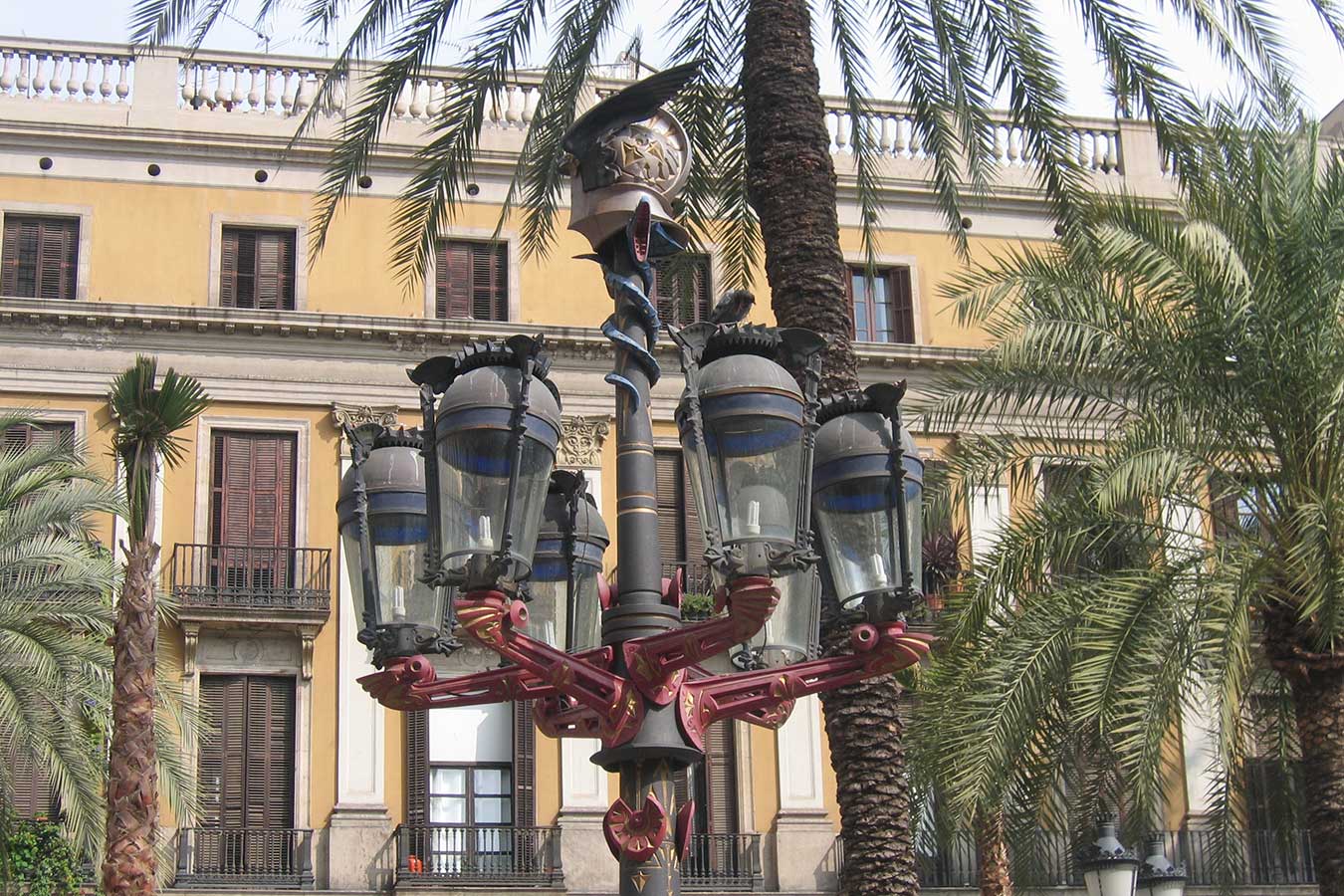
Most of Gaudi's early projects in the early 1880s were influenced by the Arab architecture. During this period, Gaudí built Casa Vicens and Casa Comillas. The distinctive Casa Vicens was built for Manuel Vicens i Montaner between 1883 and 1888 in Calle les Carolines in Barcelona. In Casa Vicens, the use of tiles is all-dominating, a well-chosen building material in this context, as Vicens was a tile producer.
The next period is characterized by a greater influence on the Gothic/Neo-Gothic. El Colegio de Teresianes in Barcelona is one of the first examples of the neogothic influence in the work of Antoni Gaudí.
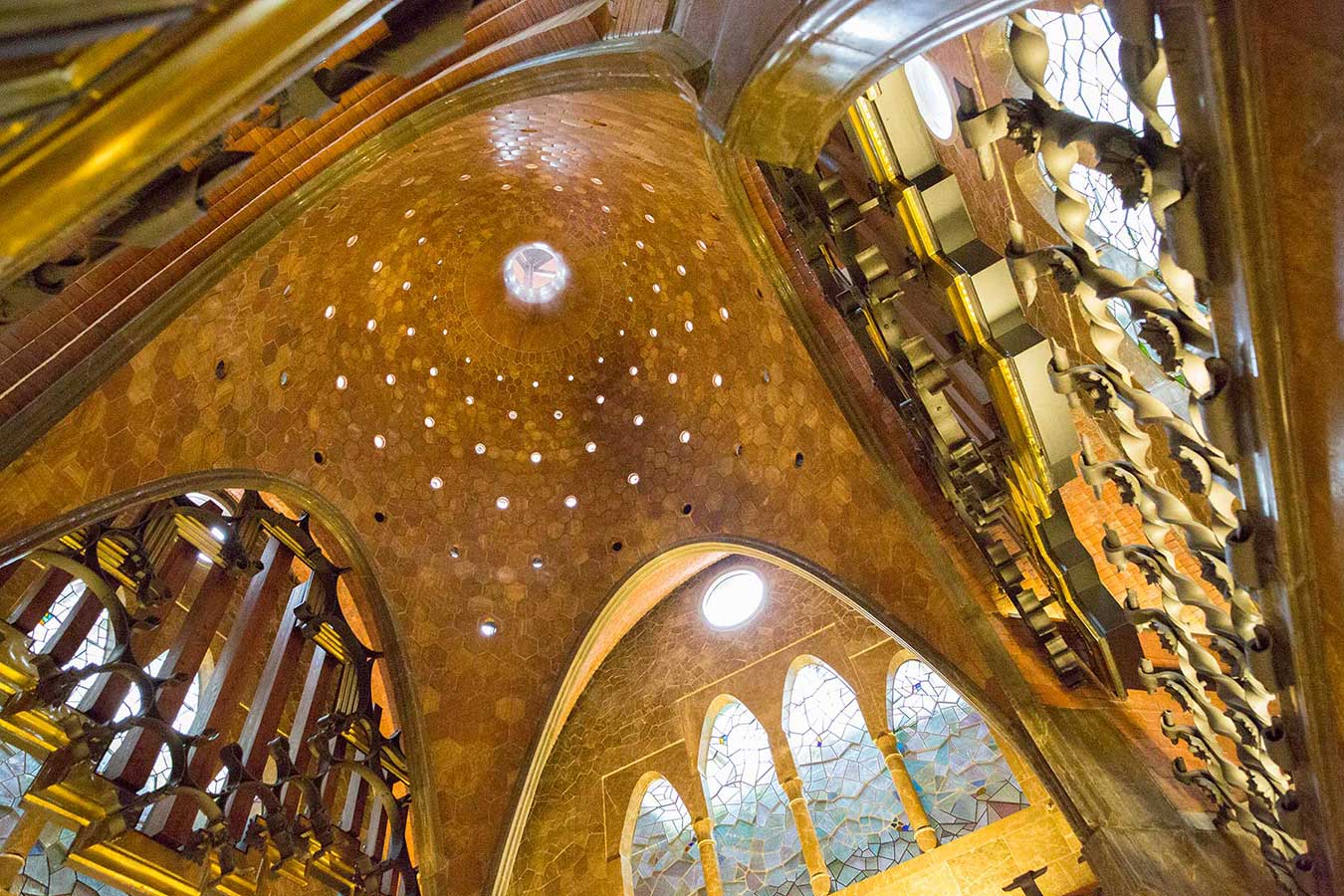
This also applies to the first major work of Güell, Finca Güell. From this work, especially the dragon gate - a masterpiece in wrought iron - has become famous. It refers to one of the main works of the New Generation Nationalist Literature, Jacint Verdaguer's L'Atlàntida from 1878. The dragon refers to a rewriting of the myth of the Hesperides, where a winged wing guardes a garden where three beautiful nymphs live. Hercules overcomes the dragon and can thus enter the garden.
Also, the magnificent Palau Güell, built a stone's throw from the Gothic Quarter of Barcelona, belongs to the Gothic period, and has numerous references to Catalan culture and history. Another of the main works of the period is the crypt of the church of Colonia Güell. The building plays a leading role as an architectural preliminary study for the final design of the La Sagrada Familia.The drawings, Gaudí left behind, show clear similarities to the La Sagrada Familia and indicate how the lower part of the church should have had the same wavy shape as taken at school next to the Sagrada Familia. In addition, the bearing element in the crypt is the oblique pillars that should become dominant in the La Sagrada Familia.
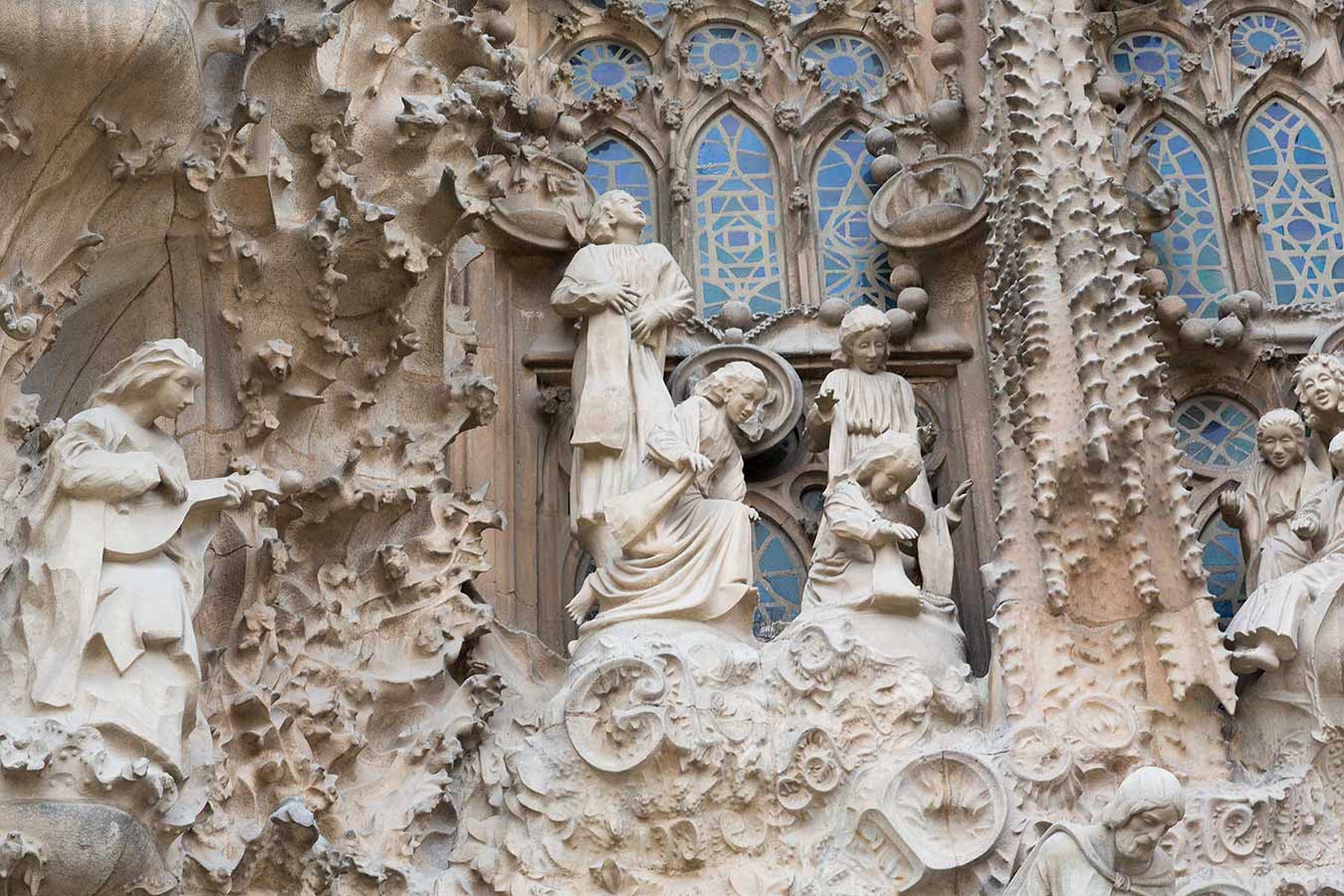
One of Gaudí's earliest buildings and an example of Gaudí's oriental period. Casa Vicens was built in the small town of Gracia outside Barcelona. Today Gracia is part of the city. The building is covered in ceramic tiles, which is a tribute to its owner, Manuel Vicens i Montaner, who owned a fabric that produced ceramics.
There are several orientalist elements in the buidling: the arches are typically islamic in style and the building uses domes typical of Islamic architecture. The building is on UNESCO's World Heritage List.
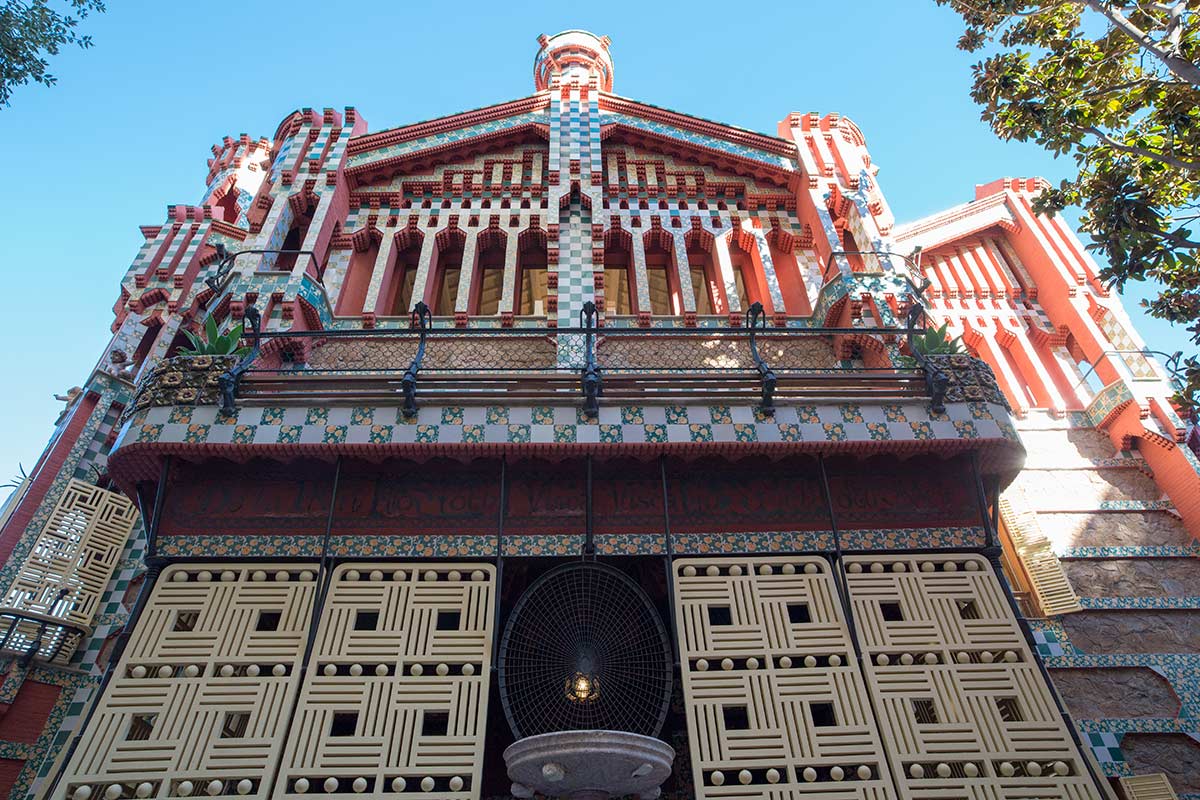
This mansion was designed by Gaudí for Eusebi Güell, who had a big impact on the architect, especially in the first half of Gaudí's life. The 'Palau' (palace in Catalan) for the Güell family is on UNESCO's World Heritage List. The building has both neogothic and arabic elements. From the outside, most of all it looks like a medieval structure, and the facade is somehow somber and heavy, but the interior is impressive and filled with details. The building was reopened in 2011 for visits after a restauration process of more than 7 years.
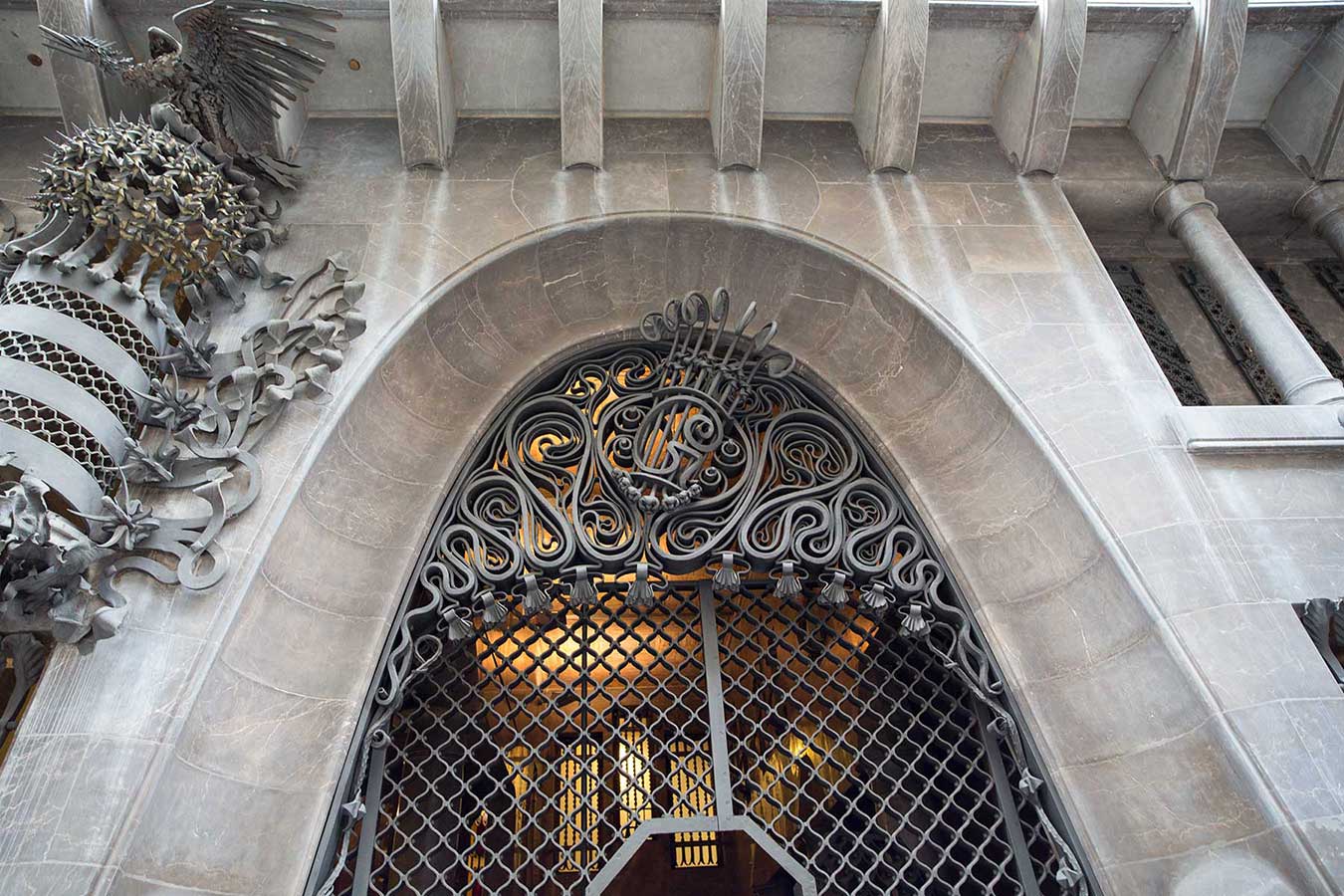
The School of the Teresianes (Colegio Teresiano or in Catalan: Col·legi de les Teresianes) was one of Gaudís first buildings. The building was made in the end of the 1880'ies during the period when Gaudí is starting to work in the neogothic style. The school is impressive and uses the gothic vaults extensively.
The founder of the catholic order, Compañía de Santa Teresa de Jesús, san Enrique de Ossó, comissioned the building to the young Gaudí, who at that time had adquired fame and the two had friends in common like Jacinto Verdaguer.
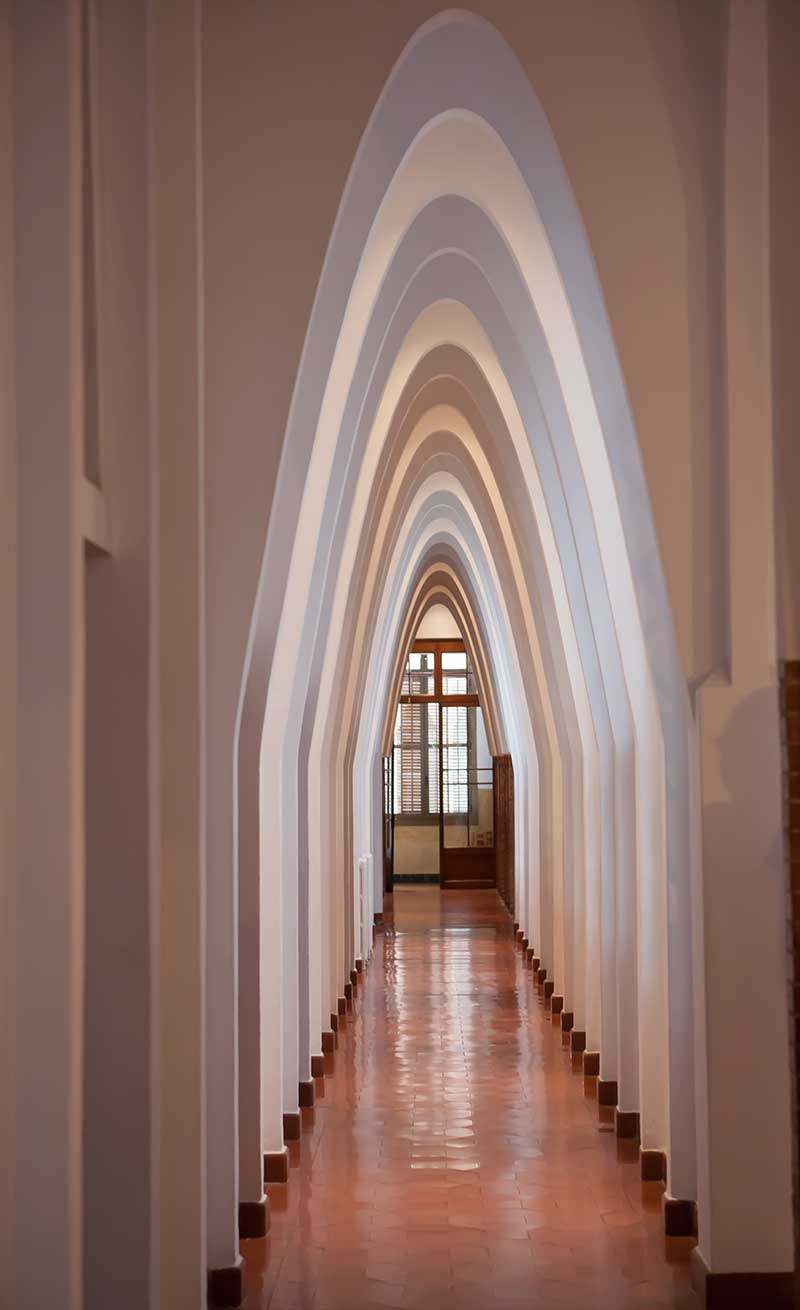
One of Gaudí's earliest buildings, Bellesguard is also known as the Casa Figueres, since Jaume Figueres bought the ground in 1900 and hired Antoni Gaudí to design his house. The house is built in a mythical place, since on the ground of a residence belonging to Martin el Humà, the last king of the Kingdom Aragon-Catalonia and the building has several references to the kingdom.
After the death of Jaume Figueres, Gaudí dealt with the wife María Molíns. However, the relationship between the two was not good, and the building got so expensive because of all the details Gaudí wanted that she had to sell the house to avoid bankruptcy. The house shifted owners and in 1944 the Guillera family bought the house. This family opened the house for visits in 2013.
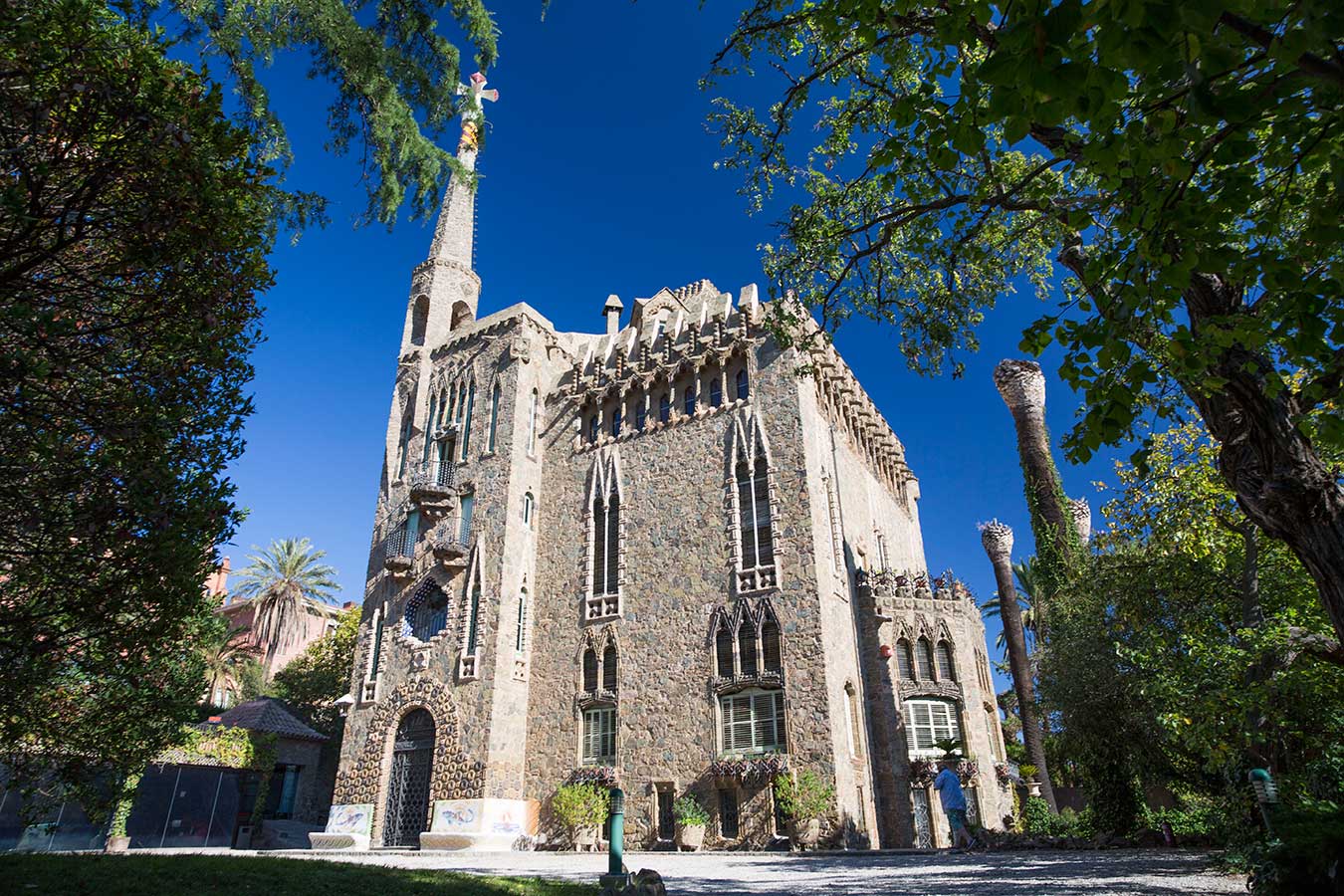
One of the main works by Antoni Gaudí. The park is another proyect for the wealthy Güell family (apart from Palau Güell, Finca Güell, Colonia Güell and Bodega Güell). Before starting the work on Park Güell, Güell and Gaudí has allready designed Colonia Güell outside Barcelona, a colony for workers. The count Eusebi Güell bought the ground in 1900 and Gaudí designed both gardens, sculptures, terrasses and houses. The park was inspired by the English tradition of Garden and Park design - this is why the name is spelled with 'k' (in Catalan it would be Parc).
Park Güell has many interesting details, like mosaics, columns and the beautiful bench designed together with Josep Maria Jujol. The park has been on the UNESCO World Heritage List since 1984.
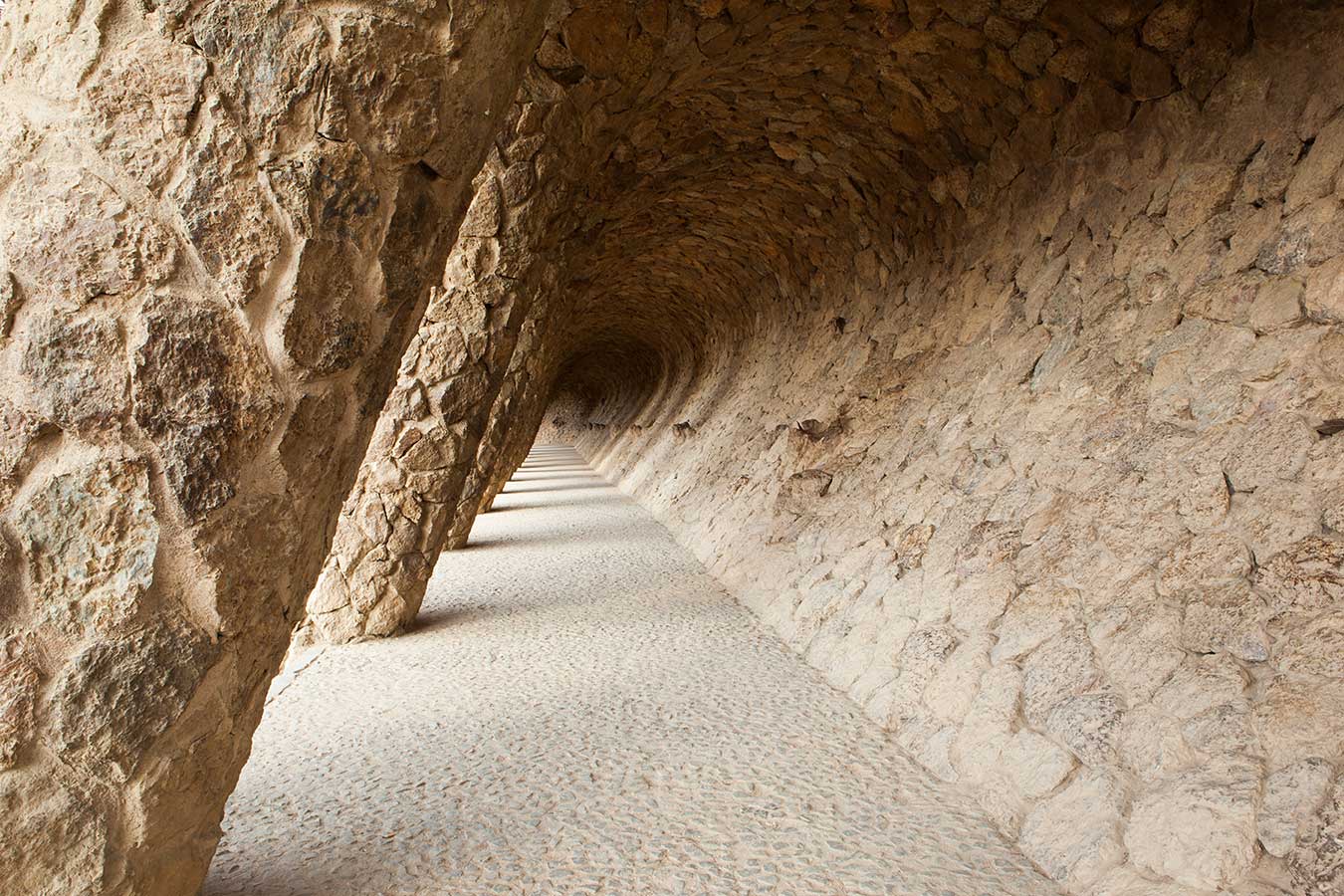
With the construction of Casa Batlló (1904-06) Gaudí reached a peak in his career. The use of tiles and the waving movement of the structure was something new that was to be a leitmotiv in the future architecture of Gaudí. The house is a transformation of an already existing building that Gaudí gave a radical reformation, giving it new life and including many references and allusions to the history of Catalonia.
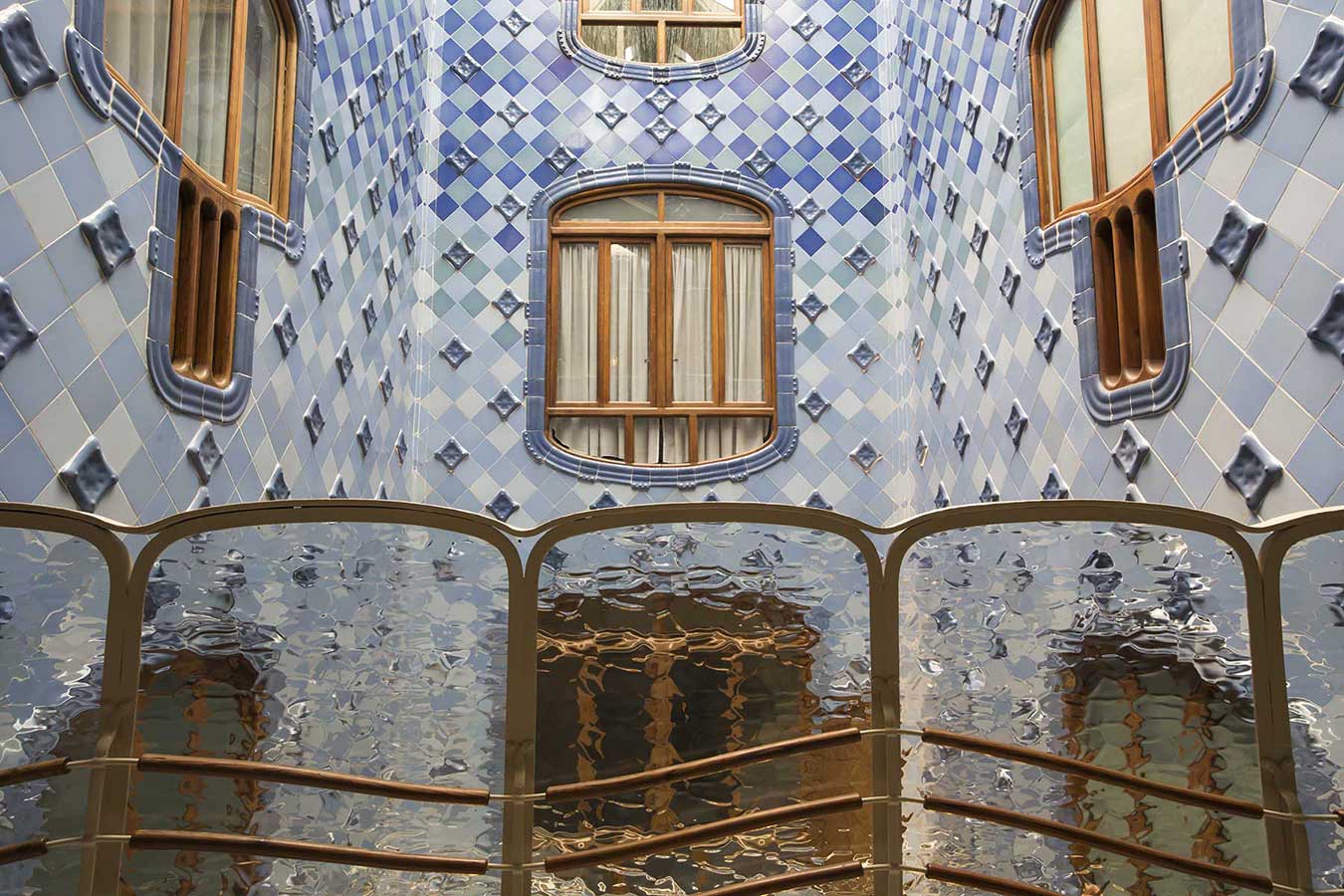
The enormous building a bit further up the street (Passeig de Gràcia), Casa Milà, is yet another one of Gaudí’s masterpieces. It was commissioned by a friend of Batlló, Pere Milá i Camps. Gaudí designed furniture to the building and built one of the most distinctive of the city's buildings.
In fact the building was so peculiar to Gaudï's contemporaries that they baptized the building la pedrera (the quarry) and the newspapers made caricature drawings of it. However, in 1984 Gaudí and Casa Milà got their well deserved recognition: this was the year when Casa Milà was included on UNESCO's World Heritage List.
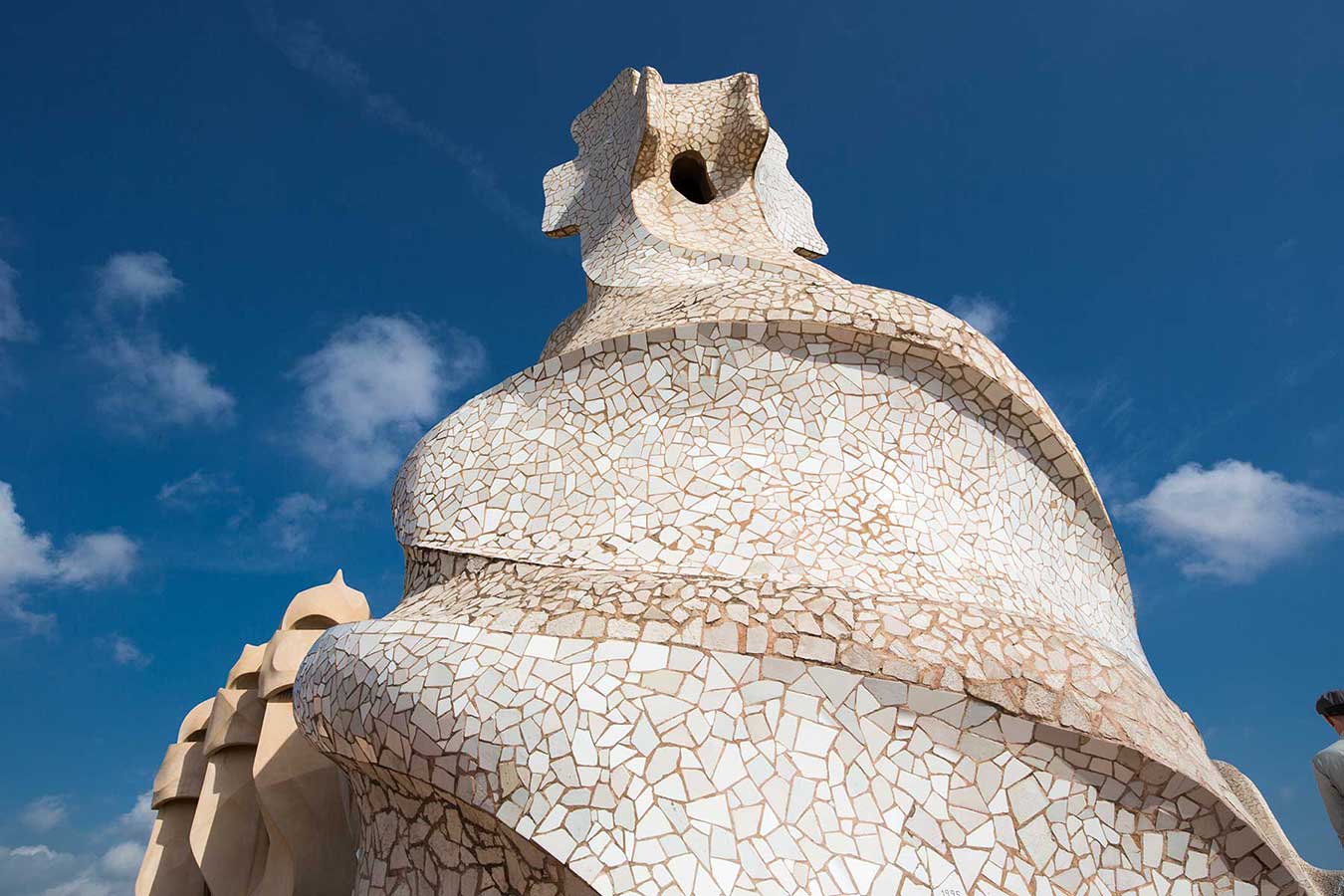
La Sagrada Familia is probably the most famous building in Barcelona and one of the most well known in Spain. Gaudí worked 43 years on the construction of the church, and the building is still not finished (the construction work is supposed to end sometime in the 2020's). La Sagrada Familia will have 18 towers representing the 12 apostles, the 4 evangelists, Virgin Mary and Jesus. The Tower of Jesus will be the highest: it will rise from the center of the church and go up 170 meters – the towers that have been finished are 109 meters high.
